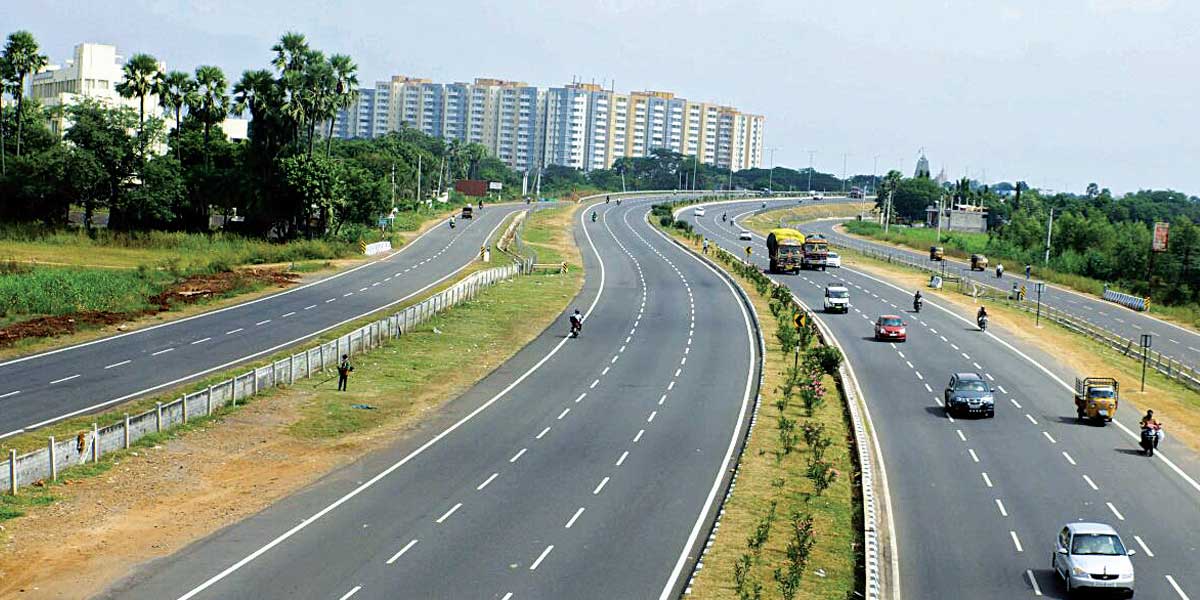It is an economic truism that focusing investments in infrastructure is a key requirement for fostering economic growth and for improving the quality of lives for all. Apart from the classical Keynesian pump-priming benefits promoting growth, infrastructure augmentation enhances livelihood opportunities across the board, while augmenting the pace of inward investment not just in infrastructure alone; but also on dependent sectors like manufacturing, agriculture, and trade. Various studies have estimated the multiplier effect of investment in infrastructure to be between 2.5 and 3.5 times, implying that for every rupee invested, GDP gains will be between 2.5 to 3.5 rupees.
The process friction arising from infrastructure deficits not only enhances the wear and tear around our social and economic transactions, but also hampers economic growth – accounting for around 13-14 per cent drag on India’s GDP. India’s infrastructure ambitions have been attenuated by inadequate private sector involvement, with the rate of private investment going down to 24 per cent in FY21 from a peak of around 35 per cent in FY16 . The government has recently commenced an initiative to reform the policy and regulatory ecosystem for accelerating the pace of private investment in infrastructure, ranging from fairer contractual conditions and risk allocation policies, to faster dispute resolution mechanisms.
Given the size and complexity of our country, another key drag on infrastructure creation has been the number and variety of agencies involved, as well as the policy and regulatory ecosystems that have to be navigated. The ministries of the union government and their agencies, state governments, public sector enterprises, private firms, special purpose vehicles are all in this game, and have the daunting task of overcoming challenges like geographical variety, environmental fit, community impacts, land records and regulations, and disparate policy & regulatory ecosystems across various states, to name just a few.
The bane of infrastructure project implementation has been the variety, the complexity, and the unexpectedness of challenges that may come up in implementation, ranging from land acquisition and resettlement issues, environmental and social impact clearances, consequential legal challenges, and coordination with other agencies who may have competing claims over the project or its implementation territory. The Gati Shakti NMP aims to enable more informed geospatial-based planning and project oversight, thus reducing the magnitude of many of these challenges and consequential implementation delays. For instance, the railways ministry has already benefited from superimposing the alignment of details of three new proposed Dedicated Freight Corridors on the NMP platform, thus ensuring that their interface with forests, mining areas and industrial parks are minimized. This is a case in point to demonstrate how geospatial intelligence-based advance planning not just enhances the speed of project execution, but also minimizes adverse impacts on the environment, as well as on affected communities.
Another example is the Telecom Ministry’s ongoing project to lay optical fibre cable for 1,300 km along the right of way (RoW) of the Delhi-Mumbai expressway utilizing the insights garnered by Gati Shakti, thus not only economizing space and saving costs, but also economizing on the labour of fresh digging. Meanwhile the Petroleum Ministry is proposing to align the Mundra Panipat Crude Oil Pipeline project along the RoW of the Amritsar-Jamnagar expressway, again optimizing efforts and costs.
Many states like Andhra Pradesh, Goa, Gujarat, Karnataka, Madhya Pradesh, Punjab, Rajasthan and Uttar Pradesh have now boarded the bandwagon of the Gati Shakti National Master Plan, and once this geospatial platform gains traction, we are going to see enormous spinoff benefits in terms of lesser effort, economical and faster implementation, more muted impacts on the environment and on social life, and consequential better acceptance of major infrastructure projects by communities at large.
It is expected that the Gati Shakti NMP will be an even more powerful tool once it is made open access to the public, which will facilitate crowd-sourced suggestions, corrections, and iterations, as well as enabling fairer,
more democratic, and more accurate assessments of the environmental and social impact of public
infrastructure projects.
Given that the government has embarked on one of the most ambitious infrastructure augmentation programmes ever attempted in this country, encompassing three key facets, National Infrastructure Pipeline with its investment target of ` 111 trillion over FY2020-25 for the creation of reliable infrastructure, the `6 trillion National Monetisation Pipeline which attempts to systematically unlock value in brownfield projects to channel the funds back into infrastructure creation, the initiative to revamp the public-private partnership (PPP) ecosystem; the Gati Shakti National Master Plan will serve as the underpinning not just to plan and execute public projects better, but also to optimize alignments and costs, ensure better bundling of projects by optimizing space, reduced adverse environmental and social impacts on stakeholders; while reducing waste arising from overdesigning of projects and lack of geographical optimization.
All told, Gati Shakti programme is globally unprecedented in terms of its sheer size, scale, and ambition. Along with other related endeavours, it is expected to pave the way for India to put in place state-of-the-art infrastructure ranging across sectors like railways, roads, ports, waterways, and airports; which would be a significant milestone towards India’s aspirations of becoming a fully developed country by the year 2047.
Source:
Enabling Logistics Efficiency” through Implementation of PM Gati Shakti National Master Plan, Press Information Bureau, 28 February 2022
Report of the Task Force-Volume 1, Department of Economic Affairs, Ministry of Finance, accessed on 30 August 2022
Prime Minister’s address to the nation on the 76th Independence Day, Press Information Bureau, 15 August 2022




















